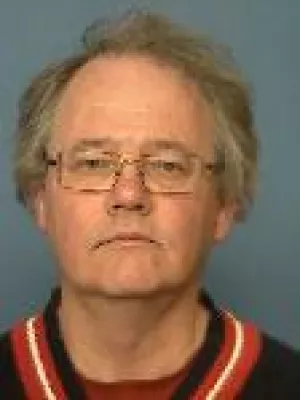
Göran Skog
Senior lecturer

Long-term biokinetics and radiation exposure of patients undergoing 14C-glycocholic acid and 14C-xylose breath tests.
Author
Summary, in English
The (14)C-glycocholic acid and (14)C-xylose breath tests are clinically used for the diagnosis of intestinal diseases, such as bacterial overgrowth in the small intestine. The two tests have in earlier studies been thoroughly evaluated regarding their clinical value, but due to the long physical half-life of (14)C and the limited biokinetic and dosimetric data, which are available for humans, several hospitals have been restrictive in their use. The aim of this study was to investigate the long-term biokinetics and dosimetry of the two (14)C compounds in patients and volunteers, using the highly sensitive accelerator mass spectrometry (AMS) technique. Eighteen (18) subjects were included, 9 for each compound. The (14)C content in samples from exhaled air, urine, and, for some subjects, also feces were analyzed with both liquid scintillation counting (LSC) and AMS. The results from the glycocholic acid study showed that, up to 1 year after the administration, 67%+/-6% (mean+/-standard deviation) of the administered activity was recovered in exhaled air, 2.4%+/-0.4% was found in urine, and 7.6% (1 subject) in feces. In the xylose study, the major part was found in the urine (66%+/-2%). A significant part was exhaled (28%+/-5%), and the result from an initial 72-hour stool collection from 2 of the subjects showed that the excretion by feces was insignificant. The absorbed dose to various organs and tissues and the effective dose were calculated by using biokinetic models, based on a combination of experimental data from the present study and from earlier reports. In the glycocholic acid study, the highest absorbed dose was received by the colon (1.2 mGy/MBq). In the xylose study, the adipose tissue received 0.8 mGy/MBq. The effective dose was estimated to 0.5 (glycocholic acid) and 0.07 mSv/MBq (xylose). Thus, from a radiation protection point of view, we see no need for restrictions in using the two (14)C-labeled radiopharmaceuticals on adults with the activities normally administered (0.07-0.4 MBq).
Department/s
- Medical Radiation Physics, Malmö
- Nuclear physics
- Quaternary Sciences
- Clinical Physiology and Nuclear Medicine, Malmö
Publishing year
2007
Language
English
Pages
762-771
Publication/Series
Cancer Biotherapy & Radiopharmaceuticals
Volume
22
Issue
6
Links
Document type
Journal article
Publisher
Mary Ann Liebert, Inc.
Topic
- Cancer and Oncology
Status
Published
Research group
- Medical Radiation Physics, Malmö
- Clinical Physiology, Malmö
- AMS, Nuclear Physics
ISBN/ISSN/Other
- ISSN: 1557-8852

